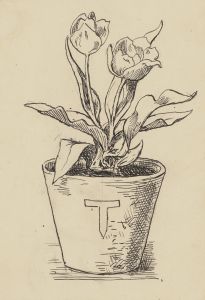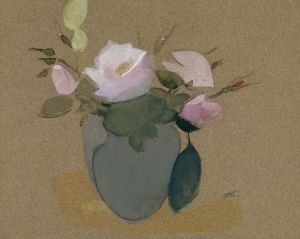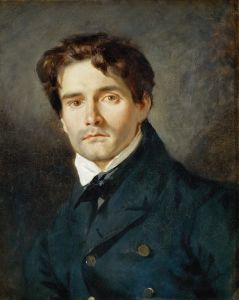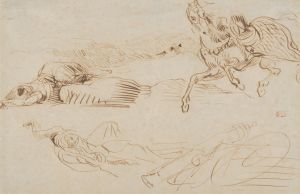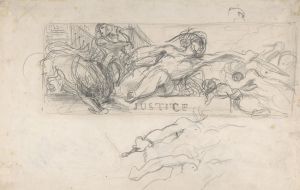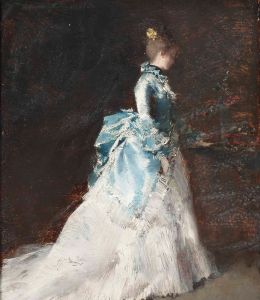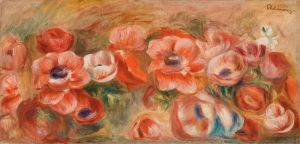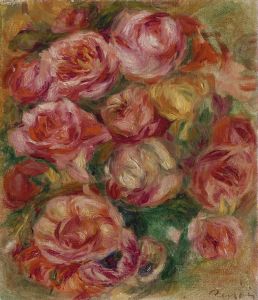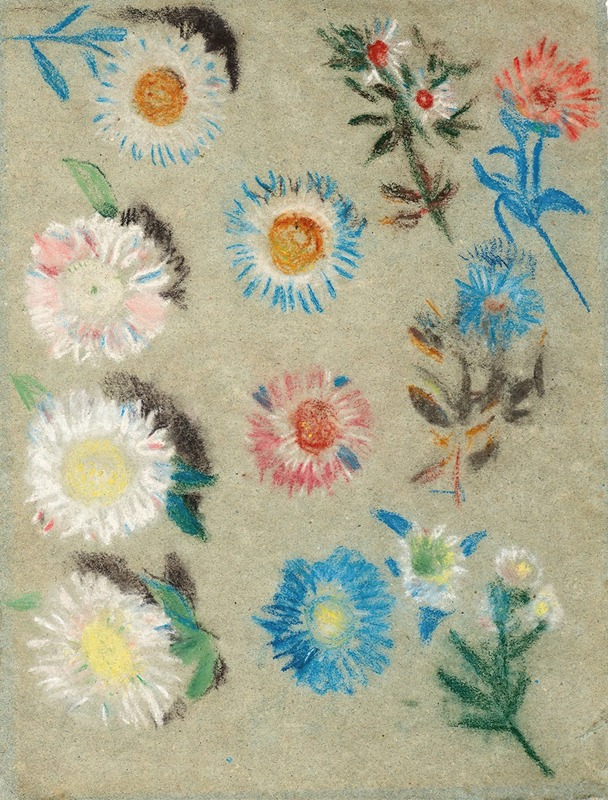
Étude de fleurs
A hand-painted replica of Eugène Delacroix’s masterpiece Étude de fleurs, meticulously crafted by professional artists to capture the true essence of the original. Each piece is created with museum-quality canvas and rare mineral pigments, carefully painted by experienced artists with delicate brushstrokes and rich, layered colors to perfectly recreate the texture of the original artwork. Unlike machine-printed reproductions, this hand-painted version brings the painting to life, infused with the artist’s emotions and skill in every stroke. Whether for personal collection or home decoration, it instantly elevates the artistic atmosphere of any space.
Eugène Delacroix, a leading figure of the French Romantic movement, is renowned for his vibrant use of color and expressive brushwork. Among his diverse body of work, "Étude de fleurs" (Study of Flowers) stands out as an example of his interest in natural subjects and his skill in capturing the delicate beauty of floral arrangements.
"Étude de fleurs" is a still life painting that showcases Delacroix's ability to render the intricate details and vivid colors of flowers. Although Delacroix is primarily celebrated for his dramatic historical and literary scenes, this work highlights his versatility and keen observation of nature. The painting is characterized by its lush depiction of various flowers, arranged in a seemingly casual yet harmonious composition. Delacroix's use of color is particularly noteworthy, as he employs a rich palette to convey the vibrancy and texture of the petals and leaves.
The painting reflects Delacroix's broader artistic interests and influences. Delacroix was deeply inspired by the works of the Old Masters, particularly the Baroque painters, whose dynamic compositions and bold use of color left a lasting impact on his style. Additionally, his travels to North Africa in the 1830s exposed him to new visual experiences and further enriched his color sensibility, which can be seen in the vivid hues of "Étude de fleurs."
Delacroix's approach to painting flowers was not merely about replicating their appearance but also about capturing their essence and vitality. His brushwork in "Étude de fleurs" is fluid and expressive, allowing him to convey the delicate movement and ephemeral nature of the flowers. This technique aligns with the Romantic emphasis on emotion and individual expression, which Delacroix championed throughout his career.
While "Étude de fleurs" may not be as widely recognized as some of Delacroix's larger and more dramatic compositions, it offers valuable insight into his artistic process and interests. The painting exemplifies his ability to find beauty and inspiration in the natural world, translating it onto canvas with a masterful blend of precision and spontaneity.
Delacroix's contributions to the art world extend beyond his paintings; he was also a prolific writer and theorist, articulating his thoughts on art and aesthetics in journals and letters. His reflections on color theory and the emotional power of art have influenced generations of artists and continue to resonate in contemporary discussions about art.
In summary, "Étude de fleurs" by Eugène Delacroix is a testament to the artist's skill and versatility. It captures the beauty of nature with a Romantic sensibility, showcasing Delacroix's mastery of color and form. This painting, while perhaps less famous than his grand historical works, remains an important part of his oeuvre, reflecting his enduring fascination with the natural world and his ability to convey its beauty through art.





